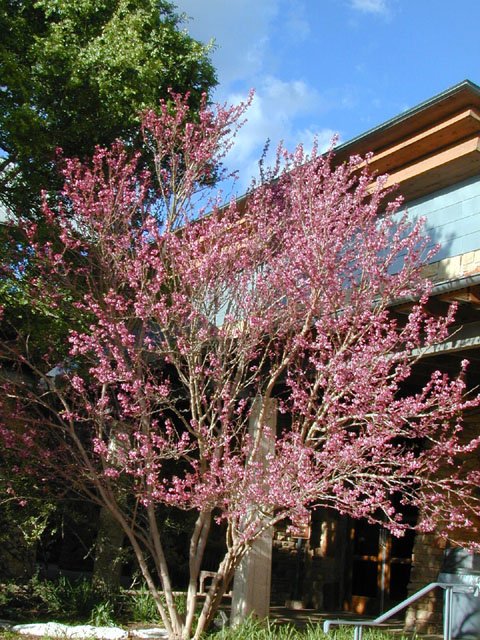Mexican Buckeye
Ungnadia speciosa
Family: Sapindaceae
OTHER NAMES
Spanish: Monilla
CHARACTERISTICS
Deciduous tree or large shrub to 15’ or more—can reach 30’ with time and care. Pink, fragrant flowers appear in spring followed by a distinctive 3-lobed reddish-brown woody capsule containing 1-3 shiny dark brown leathery seeds. The flowers emerge just as or just before the new foliage is emerging.
LANDSCAPE USE
Large shrubby screen or small specimen tree.
GROWING CONDITIONS
AN EXPLANATION OF TERMS USED
SUN full to part sun, avoid reflected heat, young plants benefit from shade in afternoon in summer (in the low desert)
WATER moderate to regular
SOIL not picky, but well-drained
HARDINESS hardy to about 0°F
BASIN mid zone
CONTAINER does moderately well in containers but will not attain full size
NUTRITION low to moderate
MAINTENANCE very little
Photo by Joseph A. Marcus, Lady Bird Johnson Wildflower Center
Ungnadia speciosa on iNaturalist
ECOLOGY
The foliage is poisonous to many animals if eaten. Larval host to the Henry’s elfin butterfly (Callophrys henrici). Has nectar-rich flowers for insects and birds. Seeds are consumed by mammals and birds after they fall to the ground.
ETHNOBOTANY
Domestic bees produce fragrant honey from the Mexican Buckeye flowers. The seeds are said to taste like pistachios, however tests on rats reveals that chemicals in the seeds cause neurological and organ damage. So this is best avoided as a food.
NATURAL DISTRIBUTION
Common in rocky areas in canyons and on slopes and ridges in Texas, southeastern New Mexico, and south into northeastern Mexico.
TAXONOMY AND NAME
This plant is in the Sapindaceae, the soapberry tree family. This is a monotypic genus, there is only one species of Ungnadia.
The genus name “Ungnadia” commemorates Baron Ferdinand von Ungnad, Austrian ambassador at Constantinople, who introduced the Horsechestnut into western Europe in 1576. The species name “speciosa” means showy, referring to particularly the spring look of the tree when it is covered in flowers and new foliage.
Although not a true buckeye (Aesculus spp.), it is so called because of the similar large capsules and seeds.
Plants are bushy long before they become arborescent (tree-like). Photo by Elizabeth Rosenauer, iNaturalist
Flowers emerge in spring just about the same time as the foliage is appearing. Photo by Tania Homayoun, iNaturalist
Pods have three carpels, three seeds. Photo by Becky Brenner, iNaturalist

Plants become tree-like when older. Photo by Mountain States Wholesale Nursery




